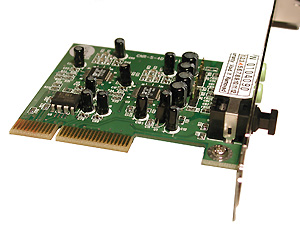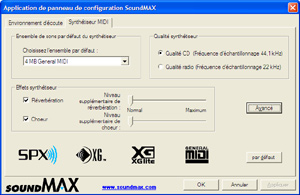
 |

|
| ActiveWin: Reviews | Active Network | New Reviews | Old Reviews | Interviews |Mailing List | Forums |
|
|
|
|
|
DirectX |
|
ActiveMac |
|
Downloads |
|
Forums |
|
Interviews |
|
News |
|
MS Games & Hardware |
|
Reviews |
|
Support Center |
|
Windows 2000 |
|
Windows Me |
|
Windows Server 2003 |
|
Windows Vista |
|
Windows XP |
|
|
|
|
|
|
|
News Centers |
|
Windows/Microsoft |
|
DVD |
|
Apple/Mac |
|
Xbox |
|
News Search |
|
|
|
|
|
|
|
ActiveXBox |
|
Xbox News |
|
Box Shots |
|
Inside The Xbox |
|
Released Titles |
|
Announced Titles |
|
Screenshots/Videos |
|
History Of The Xbox |
|
Links |
|
Forum |
|
FAQ |
|
|
|
|
|
|
|
Windows XP |
|
Introduction |
|
System Requirements |
|
Home Features |
|
Pro Features |
|
Upgrade Checklists |
|
History |
|
FAQ |
|
Links |
|
TopTechTips |
|
|
|
|
|
|
|
FAQ's |
|
Windows Vista |
|
Windows 98/98 SE |
|
Windows 2000 |
|
Windows Me |
|
Windows Server 2002 |
|
Windows "Whistler" XP |
|
Windows CE |
|
Internet Explorer 6 |
|
Internet Explorer 5 |
|
Xbox |
|
Xbox 360 |
|
DirectX |
|
DVD's |
|
|
|
|
|
|
|
TopTechTips |
|
Registry Tips |
|
Windows 95/98 |
|
Windows 2000 |
|
Internet Explorer 5 |
|
Program Tips |
|
Easter Eggs |
|
Hardware |
|
DVD |
|
|
|
|
|
|
|
ActiveDVD |
|
DVD News |
|
DVD Forum |
|
Glossary |
|
Tips |
|
Articles |
|
Reviews |
|
News Archive |
|
Links |
|
Drivers |
|
|
|
|
|
|
|
Latest Reviews |
|
Xbox/Games |
|
Fallout 3 |
|
|
|
Applications |
|
Windows Server 2008 R2 |
|
Windows 7 |
|
|
|
Hardware |
|
iPod Touch 32GB |
|
|
|
|
|
|
|
Latest Interviews |
|
Steve Ballmer |
|
Jim Allchin |
|
|
|
|
|
|
|
Site News/Info |
|
About This Site |
|
Affiliates |
|
Contact Us |
|
Default Home Page |
|
Link To Us |
|
Links |
|
News Archive |
|
Site Search |
|
Awards |
|
|
|
|
|
|
|
Credits |

|
Product: Pentium 4 2.53GHz & Intel D850EMV2
Motherboard |
CNR
| Table Of Contents |
| 1:
Introduction 2: CPU Architecture 3: SSE2 Instructions & P4 2.53GHz CPU Design 4: Intel i82850e Chipset 5: Intel D850EMV2 Motherboard 6: Intel D850EMV2 Advanced Features 7: Synthetic Benchmarks 8: Games Benchmarks 9: Applications Benchmarks 10: Benchmarks analysis 11: Conclusion |
Depending on the version of the Intel Pentium

SoundMax CNR Card
Onboard Audio
![]() In
this age, users that donít have a sound card on their PC are rare. A sound
card has definitely become essential and unavoidable. At this point every PC
- even those dedicated to office use - comes with such a device. More
demanding users have high-end PCI sound cards to listen and enjoy their
favorite MP
In
this age, users that donít have a sound card on their PC are rare. A sound
card has definitely become essential and unavoidable. At this point every PC
- even those dedicated to office use - comes with such a device. More
demanding users have high-end PCI sound cards to listen and enjoy their
favorite MP

It even
prevents headaches from sound card installation issues and other driversí
conflicts that can occur with normal sound cards. The integrated ICH
Since the
onboard circuit complies to the ACí
Another
surprising feature offered by the SoundMax Digital Audio integrated systems
is the Sensaura
The
professional
Sound Drivers
We tested the SoundMax Audio circuit under Windows XP Professional with the
latest final drivers from Intel. First of all the drivers are using the WDM
architecture so they are perfectly compliant with the advanced power
management & other DirectX features and perfectly integrated with Windows.
The SoundMax drivers offer several software features that let you enhance
the depth and strength of bass frequencies for the output signal, models the
human HRTF (Head Related Transfer Functions) to position sound effects
anywhere in a


SoundMax 3.0 Drivers Control
Panel (click to enlarge)

SoundMax 3.0 Tray Icon
USB 2.0 Backgrounder
 Massively
adopted by every computer user, the Universal Serial Bus standard has almost
replaced the old school serial port because of its numerous yet undeniable
advantages. The promoters of the USB worked hard to deliver a connecting
norm that features serious qualities: hot plug, plug & play, plus the
ability to connect
Massively
adopted by every computer user, the Universal Serial Bus standard has almost
replaced the old school serial port because of its numerous yet undeniable
advantages. The promoters of the USB worked hard to deliver a connecting
norm that features serious qualities: hot plug, plug & play, plus the
ability to connect
Thatís why
the members (Compaq, Intel, Hewlett Packard, Microsoft, Nec, Philips, etc.)
of the USB Implementers Forum have co-developed a new promising generation
of the USB norm extending performances by up to
As stated
before the main advantage of the USB
As hot and
exciting as it sounds, USB
